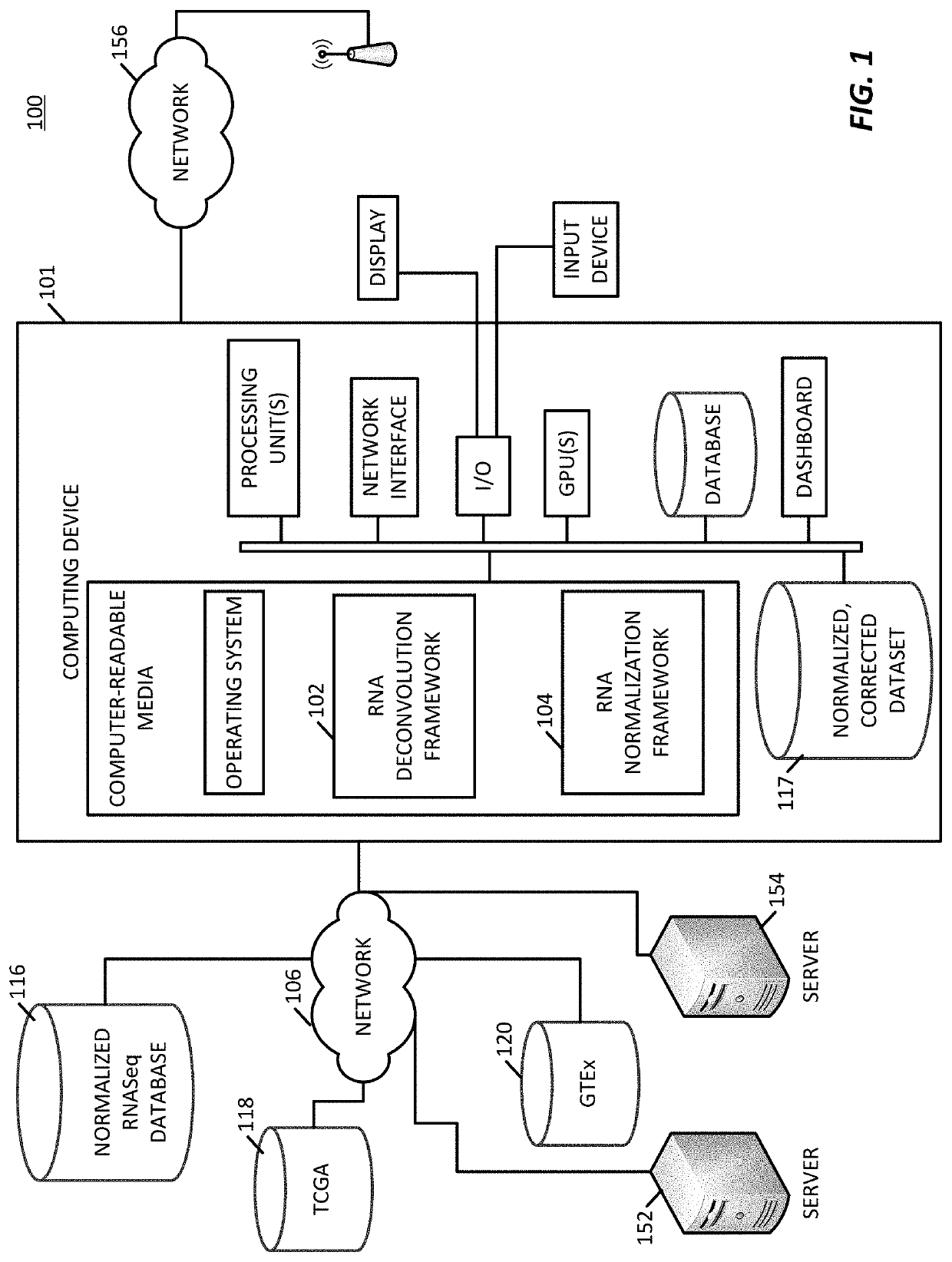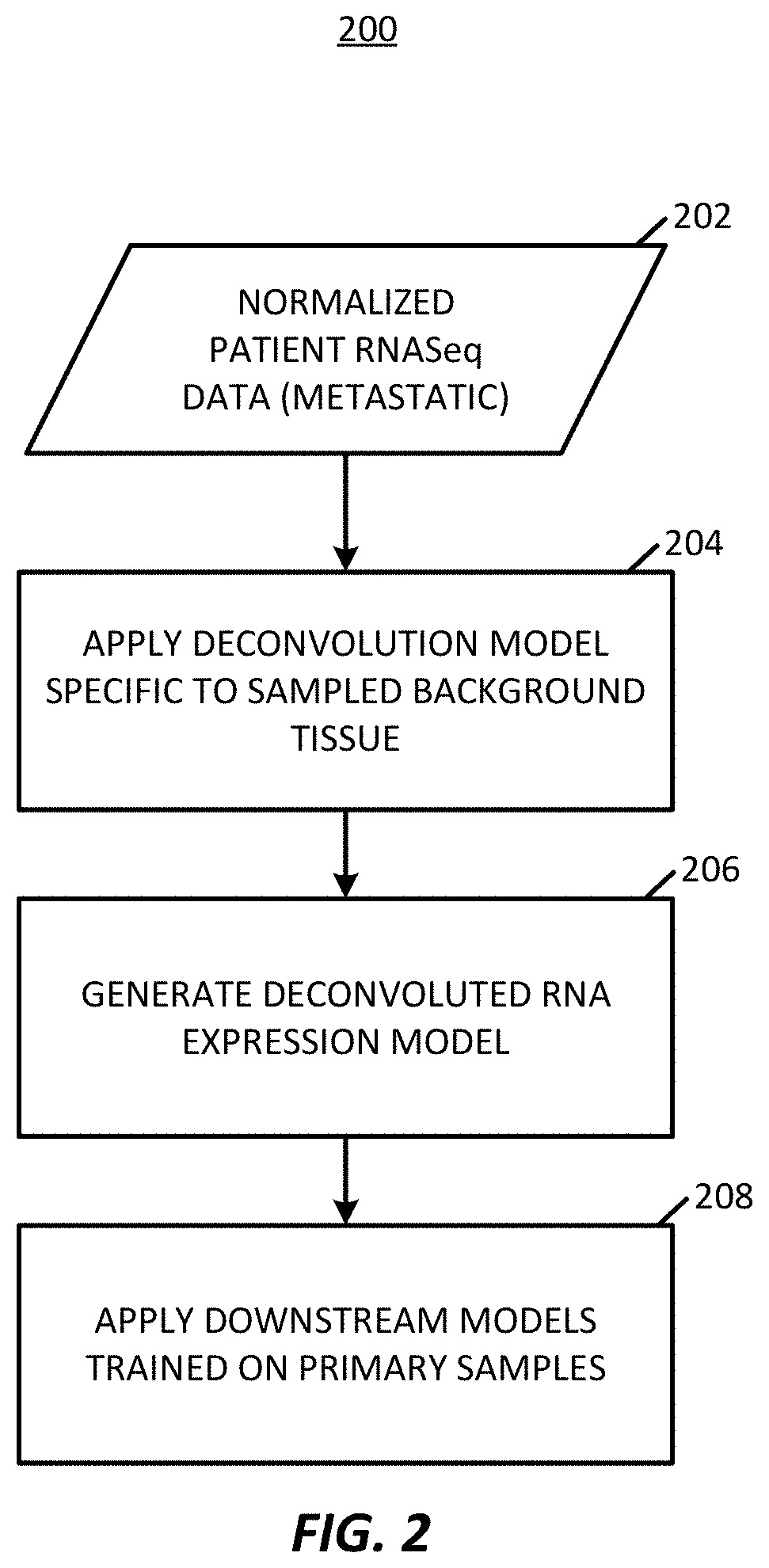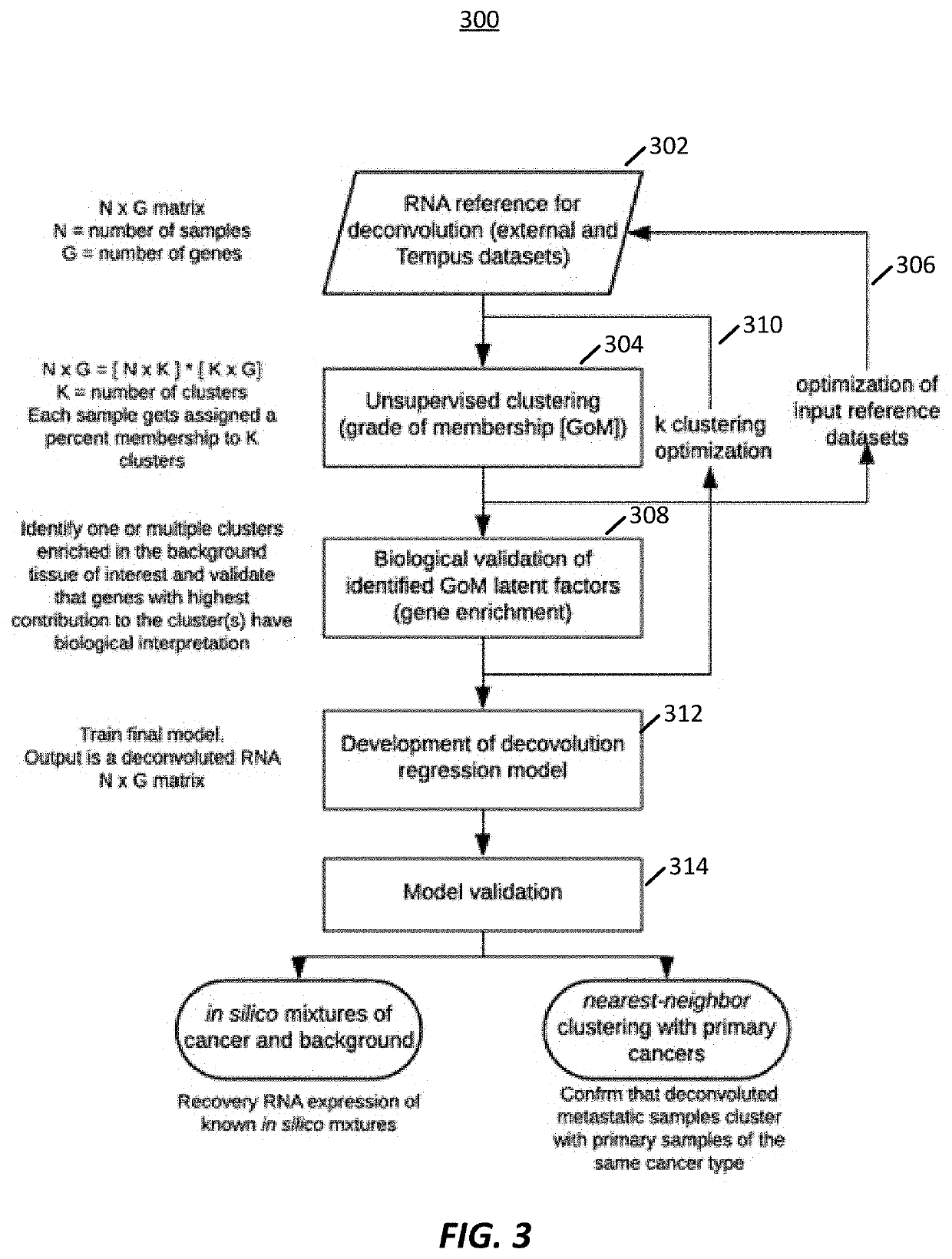Transcriptome deconvolution of metastatic tissue samples
a tumor gene and transcript sequence technology, applied in the field of transcriptome deconvolution of metastatic tumor tissue, can solve the problems of erroneous interpretation of over or under expression and subsequent treatment recommendations, inability to concisely reveal clinically relevant associations, and difficulty in deconvolution of tumor gene expression from the surveyed mixture of cell populations containing unwanted normal cells in the collected tissue, so as to inform better response or resistance to treatment
- Summary
- Abstract
- Description
- Claims
- Application Information
AI Technical Summary
Benefits of technology
Problems solved by technology
Method used
Image
Examples
examples
[0093]We now describe an example implementation of the processes of FIGS. 2, 3, and 4, in particular as applied to an example analysis of liver metastatic samples.
[0094]Initially, we compiled a reference dataset comprising 238 sequenced liver metastatic samples (Tempus Labs, Inc., Chicago, Ill.), 120 metastatic samples as part of a Met500 project, 3,508 primary samples from The Cancer Genome Atlas (TCGA) selected from among 22 cancers in the metastatic liver samples, and 136 normal liver samples from the Genotype-Tissue Expression project (GTEx), Table 1 (4,754 samples in total).
[0095]In this example, samples were collected as part of GTEx, TCGA, Met500 projects or clinical samples (Tempus Labs, Inc., Chicago, Ill.). To minimize possible batch effects, raw data from GTEx and TCGA databases were downloaded in bam file format and processed through the same RNA-seq pipeline for sequence alignment and normalization. Met500 and clinical samples underwent a RNA-seq library preparation app...
PUM
 Login to View More
Login to View More Abstract
Description
Claims
Application Information
 Login to View More
Login to View More - R&D
- Intellectual Property
- Life Sciences
- Materials
- Tech Scout
- Unparalleled Data Quality
- Higher Quality Content
- 60% Fewer Hallucinations
Browse by: Latest US Patents, China's latest patents, Technical Efficacy Thesaurus, Application Domain, Technology Topic, Popular Technical Reports.
© 2025 PatSnap. All rights reserved.Legal|Privacy policy|Modern Slavery Act Transparency Statement|Sitemap|About US| Contact US: help@patsnap.com



